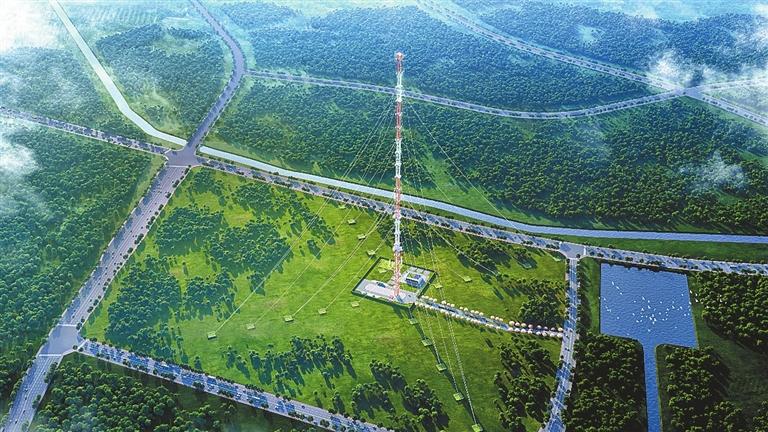
CHINA began to build a 400-meter atmospheric environment and meteorological gradient observation tower in Hefei, East China’s Anhui Province on Sunday. The tower, named Luzhou Tower - an abbreviation for “Laboratory for Unified Zenith & Horizon Observation of the Urban Atmosphere” and also referencing Hefei’s ancient name - is a project of the Hefei Institutes of Physical Science (HIPS) under the Chinese Academy of Sciences (CAS). Located within the Hefei Comprehensive National Science Center, the tower is expected to be completed and operational by September 2027, Xinhua reported. The construction presents significant technical challenges, featuring numerous heavy components connected by up to 80,000 fasteners. The 400-meter height presents additional difficulties for component hoisting and installation due to strong winds, while the design allows for a mere 13 cm vertical deviation at the top. Researcher Gui Huaqiao from HIPS explained that Luzhou Tower will enable long-term, continuous monitoring of near-ground atmosphere, which is heavily influenced by human activities but remains poorly understood due to its complex and rapidly changing nature. Conventional observation methods cannot collect comprehensive data continuously. Once operational, the tower will conduct continuous observations of atmospheric pollutant gradients, greenhouse gas fluxes, and other meteorological elements from ground level to 400 meters altitude. This capability will enhance understanding of atmospheric vertical structures and their evolution. The collected data will shed light on regional air pollution formation mechanisms, pollution-weather interactions, and help assess regional carbon sink capacity. The facility will also enable more accurate calibration of atmospheric remote sensing equipment. Gui added that the facility will include 23 fixed observation platforms and an elevator-like lab that travels up and down the tower. Advanced instruments including atmospheric turbulence monitors, greenhouse gas flux sensors, scanning lidar, high-resolution Fourier transform infrared spectrometers, and ultraviolet differential absorption spectrometers will be deployed at key observation decks to monitor atmospheric dynamics and pollution transmission mechanisms in real-time. “In addition to facilitate our own research, Luzhou Tower will be open to the global scientific community upon completion,” Gui added.(SD News) | 
